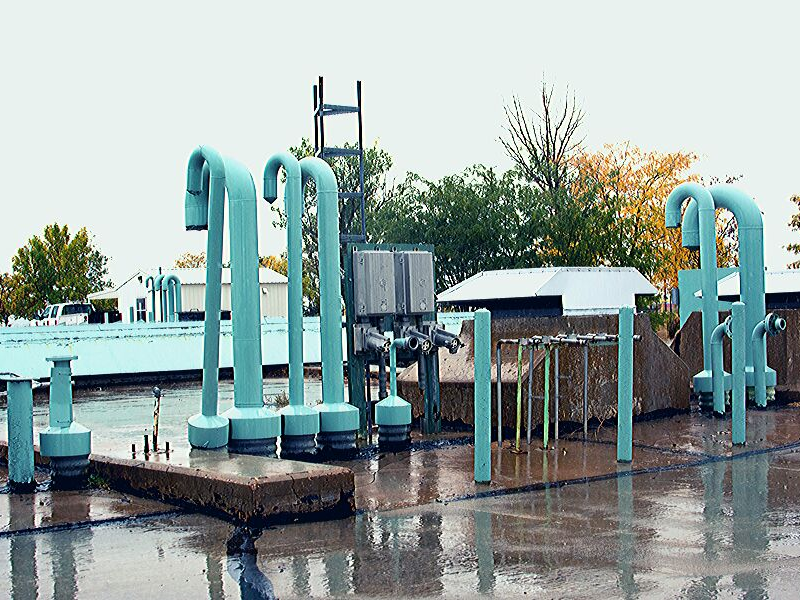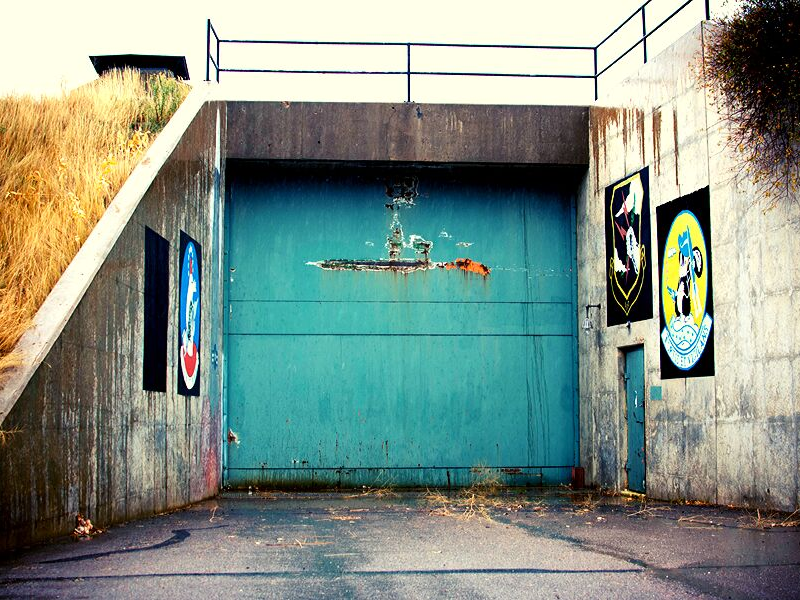Missile Site Park in Colorado is the setting for John A. Daly’s new thriller novel, Safeguard. It also happens to be a real place from which John drew inspiration for his book. Active in the early 1960s during the Cold War, the retired facility has been owned by Weld County since the 70s, and is now used as a county archive and storage facility.
When writing the book, John — out of respect for the area’s history and detail — wanted to get the description of the site as accurate as possible. So, early in the writing process, he scheduled a tour of the silo and brought along a photographer to take pictures. He would later reference those photos when describing scenes in the novel.
With the release of Safeguard, John has decided to also release some of those photos, as well as correlating excerpts from the novel. Enjoy!
Sean nodded to the men as he approached the gate. They didn’t return the gesture. He pried a ring of keys from the front pocket of his jeans and stuck one of them into a padlock that hung between the gates. As he released the lock and pulled up on a throw cane bolt, he heard one of the boys reading the largest sign secured to the mesh.
“This area is a former Atlas E . . . inter-continental . . . ballistic. . . missile silo.” The boy annunciated slowly and carefully. “The area—”
Another scout, apparently too impatient to cater to the first one’s heavy delivery, took over the narration. “The area is open to the public on a contacted tour basis. Arrangements for tours can be made by contacting the Weld County Buildings & Grounds Department.”
Sean led the group onto a concrete platform just north of his trailer. Though level, the cement was marred with long, deep cracks that had formed over time. A row of thick vertical piping, teal in color and shaped like candy canes, stuck out of the mortar. Beside it was a large air vent, concrete at its base. A metal trapezoid made up its roof.
A couple dozen yards down the drive stood an imposing twenty-four-by-twenty-feet steel blast door. It looked like something out a movie where armed military police would be stationed in front of it to protect top-secret government experimentation. Its vitality, however, had long since left.
As with the piping above, the door was teal in color, though deterioration from sections of rust gave it some character. About two thirds of the way up the door was a long, horizontal dent. Sean had been told that it was caused by a large military truck accidentally backing into it years ago. Rust was heavy around the blemish.
The door was surrounded by concrete: two diagonal sidewalls that kept the earth from the hollowed hill at bay, and a walkway above with a steel railing. Each wall displayed painted murals with different symbolic meanings. At the bottom of the wall on the right was a standard-sized metal door, teal and similarly corroded, with a large lever for a handle.
Sean stepped to the side of the doorway, exposing a circular pedestrian tunnel about eight feet in diameter. Along its ceiling were some bright caged bulbs, which Sean had neglected to turn off the night before. They lit up about thirty-five feet of ribbed metal walls and a paved walkway. At the end of the tunnel was a concrete wall where a poster with a blue emblem and a burgundy background hung.
Sean tried to explain the symbolism, but the boys were much more interested in an adjacent tunnel to the right. It was similar in style to the first one, but it was three or four times longer and protected by a padlocked chain-link gate. At its far end was a bright wall with another large picture.
The mostly bare room with a linoleum floor wasn’t particular impressive, but as more photos on the walls revealed, the twenty-by-twenty space was once overflowing with television monitors, large control panels, tall computers, and wall clocks reflecting international time zones. Shelves had been filled with binders, and grease boards had been marked up with writings like “Status” and “Emergency Checklist.”
“Are these the guys who worked here?” asked a scout as he stared at the only color poster in the room. It hung on the wall opposite Sean.
Above her, spanning most of the bay’s ceiling, was an enormous steel cradle that once held the site’s missile and its warhead. The cradle, secured by industrial arms and hinges painted bright yellow, was branded with a US Air Force star and a designation of “34E.”
That’s it for now. Check back later for more site photos and excerpts from Safeguard!






